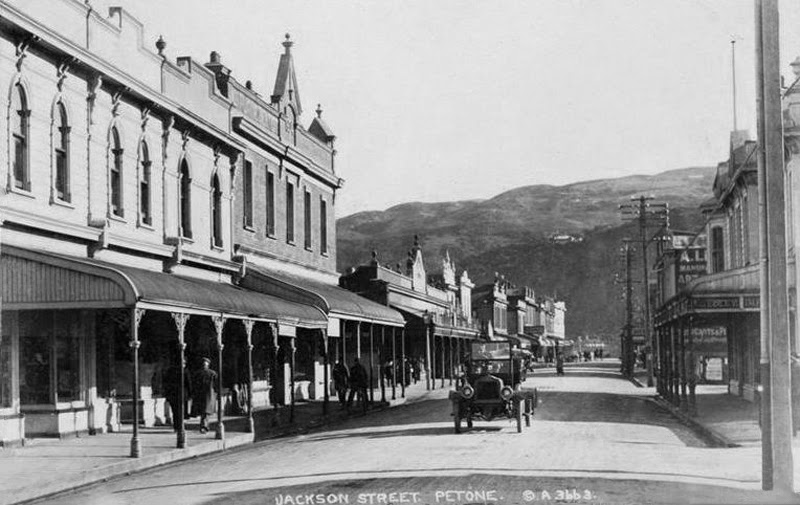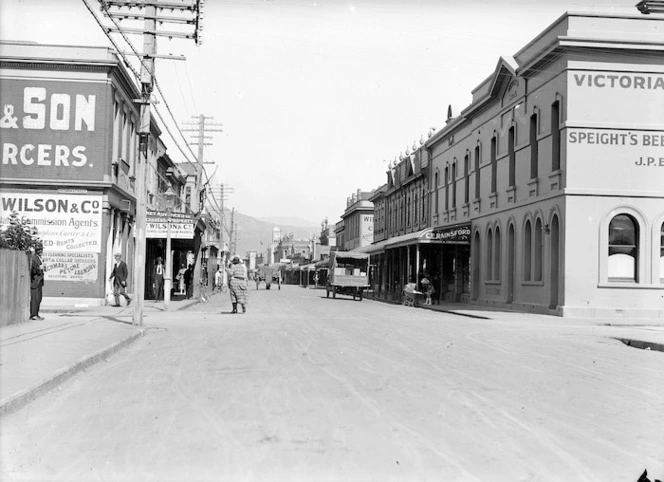Petone was the first settlement in Port Nicholson when the New Zealand Company settlers arrived in January 1840. In the first few months over 2,000 people made the beach and riverbanks their temporary homes. The settlement was called ‘Britannia’ and it was originally intended that this would be where a major town would be built. However later that same year after severe flooding most of the settlers moved across the harbour to Lambton and Te Aro.
The beginnings...
Jackson Street is Petone’s main street. However it did not originally begin that way. The original intention was to make Nelson Street, then known as Petone Avenue, the main business street. However its north-south axis was not suitable for a number of reasons, not the least of which was its alignment to the prevailing winds!
What began to develop was an east-west access along the boundary of the various properties owned by Edwin Jackson. Jackson was willing to sell sections along his boundaries for people to set up stores with the provision of a right of way. This led to a series of doglegs and a road – Jackson Street – of varying widths. But it was a beginning. (It’s worth nothing that Mr Jackson was not only a prominent local landowner, he was also a borough councillor for some years.)
The first four stores were general stores and within a few years other shops began to sprout up along the edge of Jackson’s farm from present day Petone Ave to present day Beach Street.
Developments...

Jackson Street circa 1925 looking towards the Western Hills

Looking towards the Eastern Hills. Keen readers will note that Speights (then sold at the Victoria Hotel) has been available on Jackson Street for many years...
Near the turn of the century land was added to extend Jackson Street to the Railway Station. This was the beginning of Jackson Street as the principal commercial street in Petone and the Hutt Valley until the Second World War. As the street grew so did Petone. As the street flourished so did Petone.
In the 1920s the street was straightened. A standard width of 21 metres was imposed and a number of buildings were moved to accommodate the new width. New buildings were also built. Work began on this project in 1924 but due to the advent of the Depression during the 1930s it was not completed till 1938. The resulting changes strengthened the character of the street.
Today...
The 1996 Historic Places Trust Report pointed out that Jackson Street “has a very interesting inter-war quality in terms of its architectural heritage, and it can be argued that it is one of the most complete collections of style from this period that we have in this country.”


